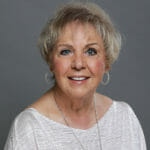An alarming Office of Inspector General study found home health agencies failed to report half of major falls among patients, putting home health providers on the defensive. The OIG identified some shocking statistics, including that 39,000 incidents of falls resulted in major injuries and hospitalizations.
The study pulled information from about 61% of all certified home health organizations. But where home health detractors might take advantage of this report, I see an opportunity for better education for clinicians about how to properly assess a patient at the start of care. With better education, clinicians can understand the need to assess fall risks and develop a plan that would clearly provide the degree of care and preparation needed to reduce any risk.
According to the Centers for Disease Control and Prevention, a person 65 or older falls every second of every day. The OIG report indicated OASIS-E information submitted often did not correspond with hospital claims information and frequently no transmission of transfer or discharge information ever occurred. While there are several potential reasons for the OIG’s findings, it is important to remember that we have a moral and ethical obligation as an industry to fully assess every patient we bring under our care, and develop a solid plan for preventing falls with the assessment information gathered. Assessing the risk for falls and obtaining orders for everything it might take to reduce that risk is our responsibility.
We all know that no patients are free of fall risks. However, in the 2018 Medicare Conditions of Participation, we were given the task of developing a plan for reducing any “risk for emergency room visits and rehospitalization” that is recognized during the comprehensive assessment.
The risks identified should include all risks identified by all team members when completing the comprehensive assessment, including the OASIS. Until now, most often the “necessary interventions to address the underlying risk factors” that the Centers for Medicare & Medicaid Services requires have included completing a “Get-up-and-Go“- style assessment, a Tinetti Balance Study, or referring the patient to a Physical and/or Occupational Therapy.
The OIG identified four specific indicators pointing to inaccurate OASIS reporting on the part of multiple home care organizations. As a result, they have engaged CMS to find solutions. The OIG recommended the following:
- Take steps to ensure the completeness and accuracy of the HHA-reported OASIS data used to calculate the falls with major injury.
- Use data sources in addition to OASIS assessments, to improve the accuracy of the quality measure related to falls with major injury.
- Ensure that agencies submit required OASIS assessments when their patients are hospitalized.
- Explore whether improvements to the quality measure related to falls can be used to improve the accuracy of other home health measures.
With these recommendations, agencies can expect that CMS will require much more scrutiny by surveyors in all OASIS assessment findings and associated plans for risks identified that might prevent hospitalizations or emergency room visits. It will be in the industry’s best interest to understand the consequences of this report but take an active role in identifying best practices in the reduction of such risks.
There are a total of 113 items collected at the start of care. Of these items at least 93 can alert the clinician to a risk for falls. When assessing every patient, it is important to remember the ‘intent’ included in every item. Understanding why the data is being collected will assist in securing the best information for the integrated assessment required.
The OIG report will not go unnoticed. Expect to experience more intense review of OASIS items during on-site surveys, patient in-home surveys and at every medical review by the MAC. Focused and thoughtful use of the OASIS can be a powerful tool for identifying risks. It will also assist us in assuring that patients get the best possible care through a detailed plan of care that will lead to quality outcomes.
Arlene Maxim is the senior vice president of clinical Services for Axxess where she leads innovative change across the healthcare continuum. She has developed and implemented multiple post-acute care programs, working closely with multiple hospitals, home care and hospice agencies, accountable care organizations, etc. With more than 40 years of nursing experience, Maxim previously co-founded regional multimillion-dollar Medicare-certified home health care companies, hospital-based home care and hospice companies and transitional care programs. Early in her nursing career she combined her clinical knowledge with her home care and hospice interests and began working as a consultant in the home care and hospice field in 1986.

